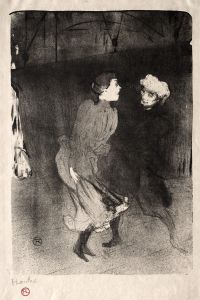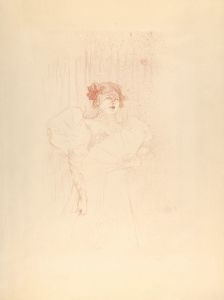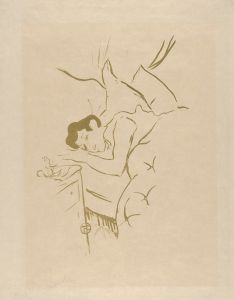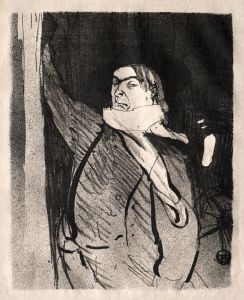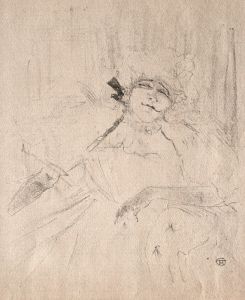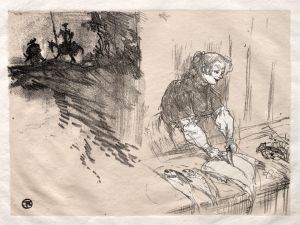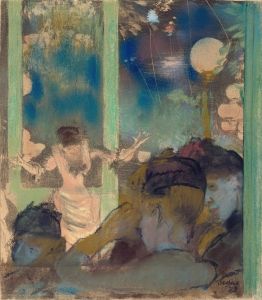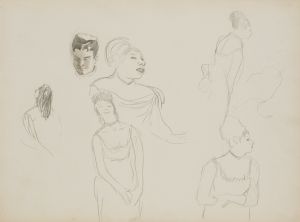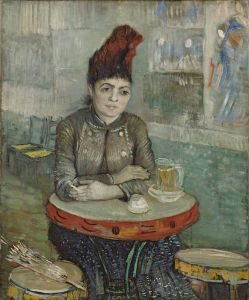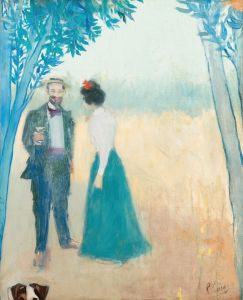
Moulin de la Galette
A hand-painted replica of Henri de Toulouse-Lautrec’s masterpiece Moulin de la Galette, meticulously crafted by professional artists to capture the true essence of the original. Each piece is created with museum-quality canvas and rare mineral pigments, carefully painted by experienced artists with delicate brushstrokes and rich, layered colors to perfectly recreate the texture of the original artwork. Unlike machine-printed reproductions, this hand-painted version brings the painting to life, infused with the artist’s emotions and skill in every stroke. Whether for personal collection or home decoration, it instantly elevates the artistic atmosphere of any space.
Henri de Toulouse-Lautrec, a prominent French painter of the Post-Impressionist period, is renowned for his vivid depictions of Parisian life in the late 19th century. One of his notable works is "Moulin de la Galette," which captures the vibrant social scene of the famous dance hall and café located in the Montmartre district of Paris. This painting reflects Lautrec's keen interest in the nightlife and bohemian culture of Paris, which he frequently explored in his art.
The Moulin de la Galette was a popular venue during Lautrec's time, known for its lively atmosphere and diverse clientele, ranging from working-class Parisians to artists and intellectuals. The establishment itself was named after a windmill, which was a prominent feature of the Montmartre landscape. The venue offered an open-air dance hall where patrons could enjoy music, dance, and socialize, making it an ideal subject for Lautrec's exploration of modern urban life.
In "Moulin de la Galette," Lautrec employs his characteristic style, which includes bold outlines, dynamic compositions, and a keen attention to the nuances of human expression and movement. His work often features a flattened perspective and a focus on the immediacy of the scene, drawing viewers into the lively environment he portrays. Lautrec's use of color and line in this painting captures the energy and excitement of the dance hall, while also providing a glimpse into the personalities of the individuals depicted.
Lautrec's ability to convey the essence of Parisian nightlife is evident in his portrayal of the Moulin de la Galette. He often depicted the patrons and performers of such venues with a sense of empathy and understanding, highlighting both the glamour and the underlying melancholy of their lives. His work provides valuable insight into the social dynamics and cultural milieu of late 19th-century Paris, offering a window into a world that was both vibrant and complex.
The painting is also significant for its reflection of Lautrec's broader artistic themes, including his interest in capturing fleeting moments and the transient nature of modern life. His work at the Moulin de la Galette is part of a larger body of work that documents the changing social landscape of Paris during this period, characterized by rapid urbanization and the rise of a new leisure culture.
Lautrec's "Moulin de la Galette" is an important piece within his oeuvre, illustrating his mastery of capturing the spirit of his time. His work continues to be celebrated for its innovative approach and its ability to convey the complexities of human experience. Today, Toulouse-Lautrec is remembered as a pivotal figure in the development of modern art, and his depictions of places like the Moulin de la Galette remain iconic representations of the vibrant cultural life of Paris at the turn of the century.






